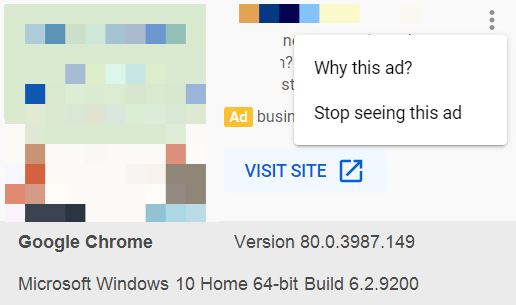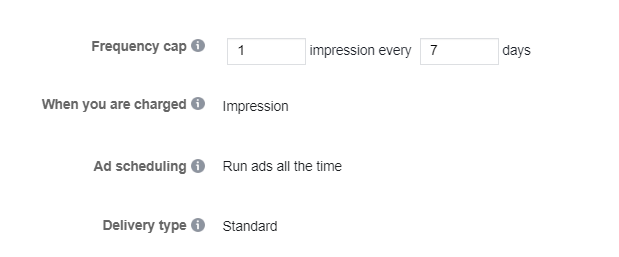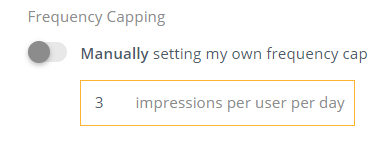The Importance of Setting A Frequency Cap and How to Do it
 If you’ve ever felt that display and video ads are stalking you by following you around the internet, you probably weren’t left with a positive impression of the business showing you the ads.
If you’ve ever felt that display and video ads are stalking you by following you around the internet, you probably weren’t left with a positive impression of the business showing you the ads.
As PPC advertisers, we want to maximize the reach of our PPC ads while still maintaining profitability. However, showing a user the same ad too many times can harm the success of your PPC campaign and your brand.
To prevent users from seeing an ad too many times, most of the major PPC advertising platforms allow the advertiser to apply a frequency cap. This tells the system not to show an advertisement to a user more than a set number of times. In this blog, we will look at why applying a frequency cap can be beneficial for your brand and your campaign performance as well as how to apply it.
Why a high-frequency rate is bad
The average number of times that a user typically sees your ad is the frequency of your ad. Having a high-frequency rate can annoy your customers. Here are some reasons why you should apply a frequency cap to your PPC campaigns:
- Maintain a positive brand image – If you annoy a user by showing them too many ads, then this is likely to give them a negative impression of your business. This could result in them being put off engaging with your business which will mean a reduction in profits for your business.
- Optimize CTR – If a user sees your ad multiple times, then this is likely to bring your clickthrough rate down. The clickthrough rate of your ads is an essential factor in deciding your click prices. If users engage with your ads more, then will bring down your click prices and ultimately result in you being able to buy more clicks for your budget.
- Put spend to good use – This can often be a problem when your audience list isn’t large enough for your budget. In this case, the advertising platform may decide to show your ad to the same person multiple times. If you have a frequency cap set in place, your ad won’t show the same person too many times.
- Control the flow of ads to users – If you have ads in multiple ad groups (or ad sets depending on the advertising platform being used), then the same user can see an ad from each of your ad groups or ad sets. Having the ability to set a frequency cap means you can take measures to control how many times each user sees an ad from your business regardless of how many campaigns or ad groups are potentially targeting that user.
Also, Read –
Google Play VS App Store: Where Should You Launch The First Mobile App
EZ Ranking SEO Vs GoDaddy SEO – Which One Is Better
What is a good frequency CAP?
The exact frequency cap that you apply will depend on your actual campaign, the audience that you’re targeting and your business niche. For example, users in the SaaS (software as a service) and digital marketing niches are a lot more aware of paid digital marketing practices. This means that you’re a lot more likely to annoy these people by showing them ads too often.
A lot of advertising platforms allow the user to specify that they don’t want to see your ad anymore. If enough users do this, then you’re likely to start to see a reduction in impressions on your ads.

As a very general rule, I don’t like to show an ad to the same user more than three times a day. If you’re not sure on the frequency cap to apply to your PPC advertising campaigns, then A UK PPC agency can help you to make this decision for you.
How do I set a Frequency cap?
So, you want to apply a frequency cap to your PPC campaigns, and you’ve decided on the cap to apply, but how do you apply it in the advertising platform? The method used to apply a frequency cap and the exact options that you have available to you depends on the actual advertising platform that you’re using.
Below, we will look at how to apply a frequency cap and your options within Google Ads, Facebook/Instagram and Adroll.
Google Ads
On Google Ads, you can add a frequency cap on Display and Video campaigns. You cannot add a frequency cap to your search campaigns as they are intent-based.
To add a frequency cap to a campaign in Google Ads, click on Settings while in your campaign and locate the Frequency Capping section. From here, you can choose what frequency cap you want to set. You can choose to set a frequency cap for either the whole campaign, ad group or each ad. You can also choose to set the cap daily, weekly or monthly.

Facebook/Instagram
When creating a campaign, if you choose ‘Reach’ as your campaign objective, then you will be able to set a frequency cap within the ‘Budgets & Schedule’ section of the campaign creation process. You can choose the frequency cap within a specified number of days.

Unfortunately, most campaign objectives don’t allow a frequency cap to be set. If you choose a campaign objective that doesn’t allow you to set a frequency cap, then you can still try to control the frequency cap by setting a budget that is right for the audience size. Facebook will try to spend your daily budget by showing your ads to people in your audience list. This means that if you set a budget that is too large for your audience size, then Facebook will need to show the same person your ad more than once. If you reduce your budget, then there is a higher chance of each person not seeing the same ad twice.
Adroll
By default, Adroll’s frequency capping is set to allow BidIQ (Adroll’s artificial intelligence to decide how often to show ads to the same person. If you want to control the number of times that your ad is shown to a person, then you will need to switch BidIQ off.
To set a frequency cap in Adroll, go to ‘Campaign Settings’ when creating a campaign and look for the ‘Frequency Capping’ option. Here you can set a maximum number of times that a person can be served your ad in a day.

Wrapping up
If you’re running a display or video campaign, then it is important to consider your brand. You don’t want to ruin your brand by showing people ads too many times and annoying them. Therefore, frequency capping is a crucial factor to consider.
The actual frequency cap that you set will depend on your business niche, your audience and the quality of the content that you’re showing to them. If the advertising platform that you’re using does not offer a frequency capping option, then you still have a partial solution by selecting the right budget for your audience size.
By setting a frequency cap, you protect your brand and may also end up improving the clickthrough rate of your PPC advertising campaigns.
Author Bio
Rashed started off doing SEO for over two years before finding his passion for PPC marketing. He has been helping businesses to increase their PPC advertising profits for over six years. Rashed is currently the PPC Director at the UK based PPC agency called Pepper PPC Agency.